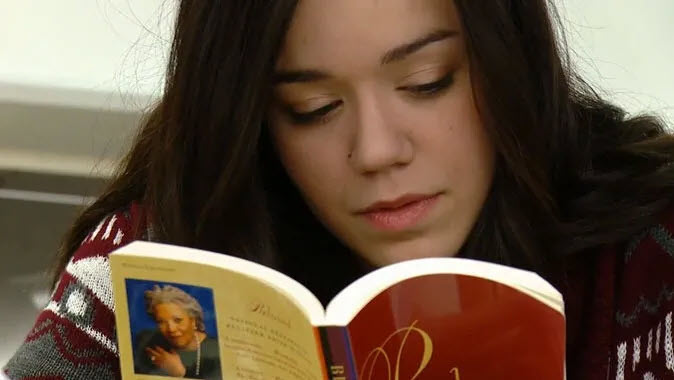For our final assignment, we were to provide a brief reflection on what we have learned this term. Specifically, we were to describe our takeaways from the course and how we benefited from the critical friend experience. We were to relate our personal experience back to the current literature on the critical friends’ framework and discuss how our experiences either mirrored or differed from research.
Experience with Critical Friend Peer Review Feedback
Frank Jamison
The Chicago School of Professional Psychology
EP614 – The Psychology of Motivation and Emotion in Learning
Dr. Ian MacLeod
June 26, 2023
Experience with Critical Friend Peer Review Feedback
My experience with Critical Friend Peer Review Feedback was, in a nutshell, substandard. This poor experience was not due to any failing in the structure of the program itself, but to the fact that my assigned Critical Friend was dealing with life issues that precluded her from participating fully in the process.
Critical Friends Group
To increase student learning through effective collaboration among educators, the National School Reform Faculty (NSRF) developed the concept of the Critical Friends Group and its specific protocols in 1994 (NSRF 2018). Critical Friends Group meetings are described by NSRF (2018) as gatherings in which participants present troublesome professional dilemmas or work. Collaborative NSRF protocols guide presenters as the group finds new ideas and next steps toward resolving issues.
Critical Friends Groups typically consist of 5 and 12 members who plan to meet regularly (Blake & Gibson, 2021). Standard protocol is for the presenter to state the nature of the problem they are having and for the group, through a facilitator, to ask probing questions to gain clarity. After the probing questions are answered, the group discusses the issue and seeks to find new ideas toward a resolution while the presenter actively listens without verbal participation. Once the discussion ends, the presenter shares what they find useful and which ideas they hope to apply.
For our specific class, we were grouped in pairs and thus could not follow the specific protocols laid down by the NSRF. This turned out to be a severe limitation when applying the Critical Friend process to our class assignments, as the inability of my partner to schedule a meeting meant I had to submit my assignments without the benefit of her feedback.
Providing Purpose
The Critical Friends group meetings are designed with a period set aside for participants to share positive aspects and address challenges with their inquiries and for the group to provide collaborative critique and feedback. Protocols establish that participants are responsible for helping each other resolve dilemmas (Curlette & Granville, 2014). By developing a culture that places each other’s interests at the heart of the conversation, an understanding of ‘how and why’ to work collaboratively can be developed (Blake & Gibson, 2021).
Supporting Participants
With Critical Friends, participants aim to create an environment in which they can challenge each other’s ideas and offer suggestions in non-threatening ways. The Critical Friends Group protocol of having the presenter not participate in the follow-up discussion prevents defensive responses and discordant atmospheres allowing the group to offer their expertise and pose questions freely. By reporting back the ideas and suggestions that the presenter is interested in following up on, the final protocol of the Critical Friends Group fosters a mindset in which participants are encouraged to identify positive suggestions rather than defending their academic abilities, further creating a positive environment (Blake & Gibson, 2021).
One of the issues I’ve found with responding to discussion board assignments is that any criticism, no matter how constructive it is meant, inevitably leads to a defensive response. While I’ve endeavored to remain supportive, I no longer feel comfortable providing constructive feedback to my peers. On the occasions that I do provide constructive feedback, I feel I have to follow it up with some form of self-deprecating comment to appease the recipient of my goodwill.
Conclusion
While The Chicago School’s commitment to the Critical Friends protocols is commendable, the protocols do not always work when groups consist only of a pair of students. Being in the position of having a partner who was experiencing tremendous personal hardships, I felt somewhat cheated out of what could have been a great experience.
All the literature leads me to conclude that the Critical Friends Group protocols have great merit, but that they are meant for larger groups. If I could humbly make a suggestion, it would be that future courses maintain groups with a minimum of three participants. This would lessen the possibility of one group member missing out on the Critical Friends experience due to circumstances that are beyond their control. Overall, the course has been enlightening, but I feel I have missed a key element of the learning objectives.
References
Blake, J., & Gibson, A. (2021). Critical Friends Group protocols deepen conversations in collaborative action research projects. Educational Action Research, 29(1), 133–148. https://doi.org/10.1080/09650792.2020.1717568
Curlette, W. L., & Granville, H. G. (2014). The Four Crucial Cs in Critical Friends Groups. The Journal of Individual Psychology, 70(1), 21–30. https://doi.org/10.1353/jip.2014.0007
National School Reform Faculty. (2018). Your guide to Critical Friends Group® (CFG®) Coaches’ Training. https://www.nsrfharmony.org/wp-content/uploads/2018/04/YourGuideToCFGCoachesTraining.pdf
Assignment Grade: 20/20



